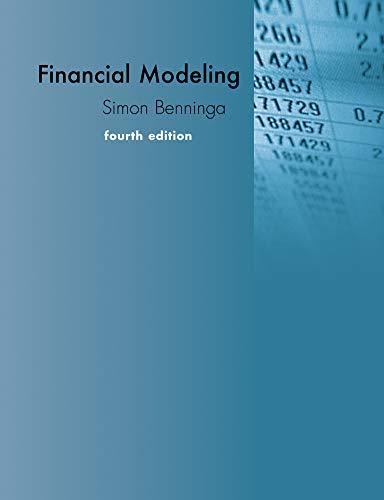Question
Calculating Payback - What is the payback period for the following set of cash flows? Year Cash Flow 0 $7,600 1 1,900 2 2,900 3
- Calculating Payback - What is the payback period for the following set of cash flows?
Year Cash Flow
0 $7,600
1 1,900
2 2,900
3 2,300
4 1,700
3.Calculating Payback [LO2] Siva, Inc., imposes a payback cutoff of three years for its international investment projects. If the company has the following two projects available, should it accept either of them?
Year Cash Flow (A) Cash Flow (B)
0 $45,000 $55,000
1 16,000 13,000
2 21,000 15,000
3 15,000 24,000
4 9,000 255,000
4.Calculating Discounted Payback [LO3] An investment project has annual cash inflows of $2,800, $3,700, $5,100, and $4,300, for the next four years, respectively. The discount rate is 14 percent. What is the discounted payback period for these cash flows if the initial cost is $5,200? What if the initial cost is $5,400? What if it is $10,400?
6.Calculating AAR [LO4] You're trying to determine whether to expand your business by building a new manufacturing plant. The plant has an installation cost of $15 million, which will be depreciated straight-line to zero over its four-year life. If the plant has projected net income of $1,754,000, $1,820,500, $1,716,300, and $1,097,400 over these four years, what is the project's average accounting return (AAR)?
8.Calculating NPV [LO1] For these cash flows suppose the firm uses the NPV decision rule. At a required return of 11 percent, should the firm accept this project? What if the required return is 24 percent?
Year Cash Flow
0 $26,000
1 11,000
2 14,000
3 10,000
19.RAK Corp. is evaluating a project with the following cash flows:
Year Cash Flow
0 $41,000
1 15,700
2 19,400
3 24,300
4 18,100
5 9,400
The company uses an interest rate of 10 percent on all of its projects. Calculate the MIRR of the project using all three methods.
15.Calculating Profitability Index [LO7] What is the profitability index for the following set of cash flows if the relevant discount rate is 10 percent? What if the discount rate is 15 percent? If it is 22 percent?
Year Cash Flow
0 $15,300
1 9,400
2 7,600
3 4,300
16.Problems with Profitability Index [LO1, 7] The Sloan Corporation is trying to choose between the following two mutually exclusive design projects:
Year Cash Flow (I) Cash Flow (II)
0 $51,000 $14,400
1 24,800 7,800
2 24,800 7,800
3 24,800 7,800
If the required return is 10 percent and the company applies the profitability index decision rule, which project should the firm accept?
If the company applies the NPV decision rule, which project should it take?
Explain why your answers in (a) and (b) are different.
17.Comparing Investment Criteria [LO1, 2, 3, 5, 7] Consider the following two mutually exclusive projects:
Year Cash Flow (A) Cash Flow (B)
0 $455,000 $65,000
1 58,000 31,000
2 85,000 28,000
3 85,000 25,000
4 572,000 19,000
Whichever project you choose, if any, you require a return of 11 percent on your investment.
If you apply the payback criterion, which investment will you choose? Why?
If you apply the discounted payback criterion, which investment will you choose? Why?
If you apply the NPV criterion, which investment will you choose? Why?
If you apply the IRR criterion, which investment will you choose? Why?
If you apply the profitability index criterion, which investment will you choose? Why?
Based on your answers in (a) through (e), which project will you finally choose? Why?
Step by Step Solution
There are 3 Steps involved in it
Step: 1

Get Instant Access to Expert-Tailored Solutions
See step-by-step solutions with expert insights and AI powered tools for academic success
Step: 2

Step: 3

Ace Your Homework with AI
Get the answers you need in no time with our AI-driven, step-by-step assistance
Get Started


